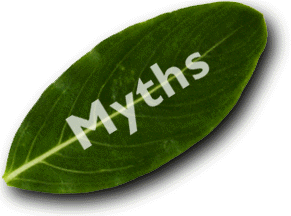"Made in [your country]" is an ongoing attractive topic in the contemporary sustainable fashion discussion. In many cases, one that borders - or is even right in the middle of - some rather right-wing nationalist sentiments. Europe as a whole does not need that - there is enough quality design and craftsmanship to be proud of without getting into shallow waters.
n the course of the last 2 years, the Greenpeace Detox campaign has repeatedly made waves.
The latest such incident happened in the context of what is possibly the world’s most relevant trade fair for performance and outdoor wear ISPO in January 2014. At that point of time, Greenpeace released news that in the water repellent coatings of jackets by some renowned brands, traces of fluorin had been identified. And that said test results had been ‘hidden’ from the public.
The supply chain.
It has been accepted a long-time ago: supply chain is a risk. Or better: a RISK in capital letters.
But also a word that sounds impersonal. Very akin to a factory being a cogwheel in a much larger clockwork. And while the definition of the term does list ‘people’, the focus is very clearly on the idea of it all being a neat system of seamless interactions.
The design stage is usually the longest, most expensive and riskiest part of the chain. Additionally, research has shown that at least an estimated 80% of a product's environmental (and to a lesser degree also social) impact is locked at the design stage into a product. By integrating the product design with the supply chain, companies can compress non-value adding time and costs in their supply chains, increase responsiveness and mitigate supply chain risks – while simultaneously managing (improving) their sustainability performance without added costs or efforts.
Unless the top line of company executives are held accountable for and judged by their contribution to the company’s risk management and mitigation efforts, including importantly CSR and sustainability performance, the company will struggle. Without senior commitment and engagement, the system only ever allows for minor ‘bug fixes’.
In Medieval times the location of a tannery was heavily based on the requirements of a nearby river or stream, cattle which could supply the hide, and of course oak trees which would supply the bark needed for the tanning process. In the present, because of the demand for luxury at the cheapest possible prices, the industry is pushed out to where it is easier to ignore the moral and environmental reek.
Supply chain transparency is – as it happens – among the prime concerns of investors when considering their risk. The news is though, that it really isn’t any news at all. Supply chain transparency has been called for for at least a couple of decades – for reasons that are entirely aligned with profitability, customer service, competitive advantage, product quality and so on and so forth.
6 cherry-picked myths, that are often led into the field of discussion against sustainable fashion, and will examine them close up and outside in.
Contrary to common opinion, ‘Australian-made’ does not always mean ethically made. In some cases salaries as low as AUS$ 4 are paid. Ethical Clothing Australia is campaigning to change their domestic fashion industry from within.
Already early last year the Swedish Fast Fashion retailer H&M announced the placement of test orders for garments from Ethiopian and Kenyan suppliers. And they're not even the first ones: Retailers such as Tesco and Walmart seem to have gone down that lane already some time ago.
For retail, Brazil is the ‘next hot’ place to go to.
For a variety of reasons: For one, the country’s economy has been for a long time up and raising. Brazil is one of the 4 BRIC countries – the 4 most dominant raising economies, and ranks forth among them. Its retail sector is expected to boom tremendously over the next few years owing largely to the two major global sport events – the 2014 FIFA World Cup and Rio 2016 Summer Olympics that will take place in the country.
This is the second post of a two article series. It will look at what we can say about the 'ethics behind a brand' from how they practically do business.
At the Copenhagen Fashion Summit 2012 the NICE Code of Conduct and Manual was, in collaboration with the UN Global Compact, officially launched. A review of this document, and the impact it may, or not, have onto the fashion industry it is targeting.
Puma’s executive have recognised some while ago that their company’s profitability and resilience to competition depends not the least on how well they are able to foresee risks in an area normally just referred to as ‘sustainability’. An overview of their tangible results
The RITE and Made-By annual conferences 2011 pinpointed the importance of supply chain ownership. A trans-disciplinary group of speakers introduced ongoing activities in their respective specialities, and illustrated the positive impact of collaboration.
Julius Walters of Stephen Walters & Sons is a ninth generation weaver of a family business founded 1720. This is the company that wove the silk for the Queen’s coronation robes and for Princess Diana’s wedding dress.
In this article a very brief run down of the main varieties of ‘better’ cotton that exist: Cotton made in Africa, Better Cotton Initiative, Organic and Fairtrade cotton, and 2 more generic good practise farming systems.
The Guardian Sustainable Business & Observer Ethical Awards 2012 edition in fashion terms. Cradle to Cradle is becoming popular in the nitty gritty of the carpet industry, Puma's Profit and Loss Accounts get credit, and Kids imitate Katherin Hamnett's 1980's slogan T-shirts to raise awareness.
Historically, fair trade has pitch to and sold thanks to consumers' guilt. A grave mistake as the currently ongoing consumption trends show. Quality, exclusivity is what has survived the economic downturn best.
During the former Soviet Union, Ukraine developed as one of the largest centres of textile industry, representing approximately 50% of the entire SU's textile industry. And even after the SU fell to pieces, the Ukraine for quite some time remained with its manufacturing power. So, what is the status quo today?




